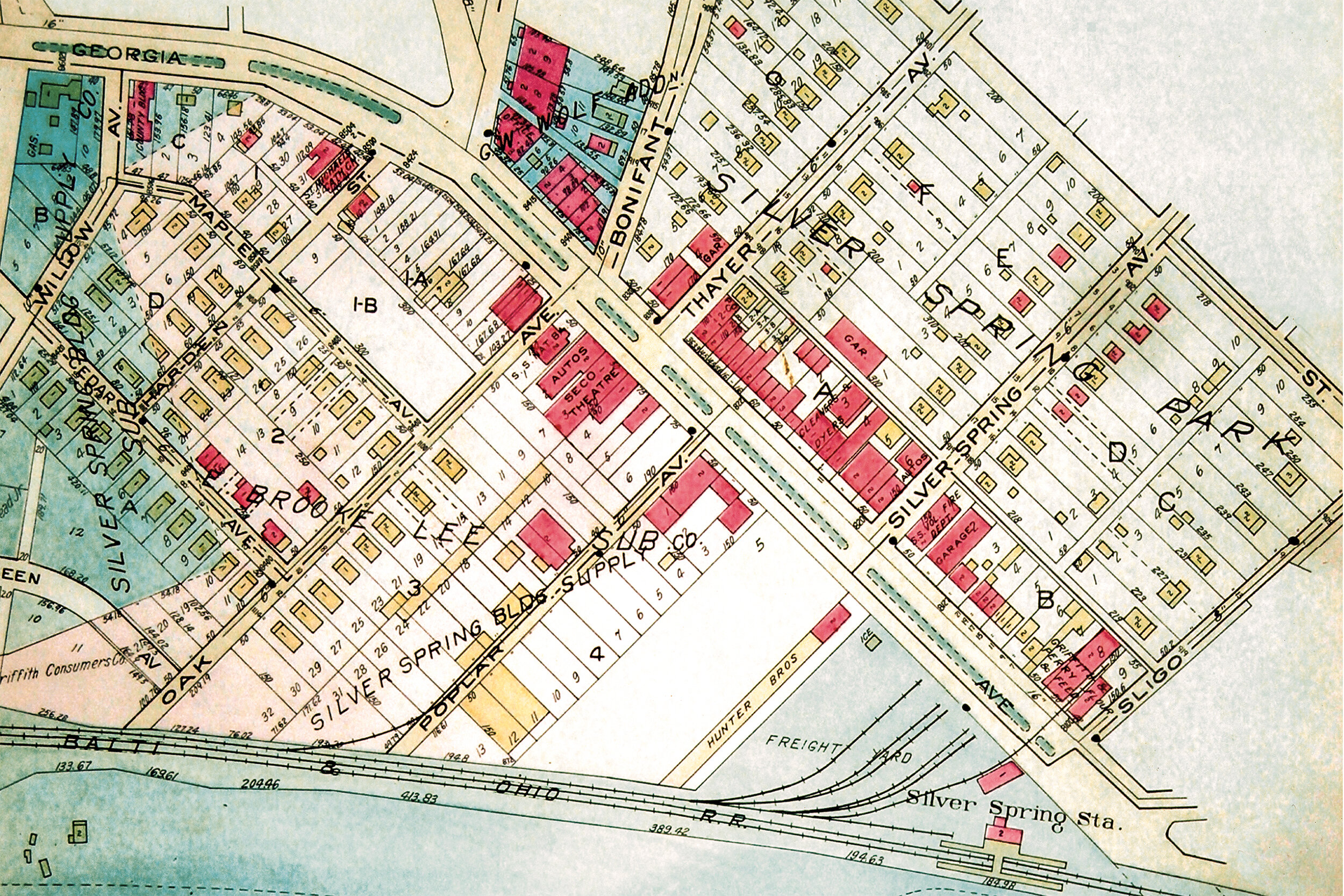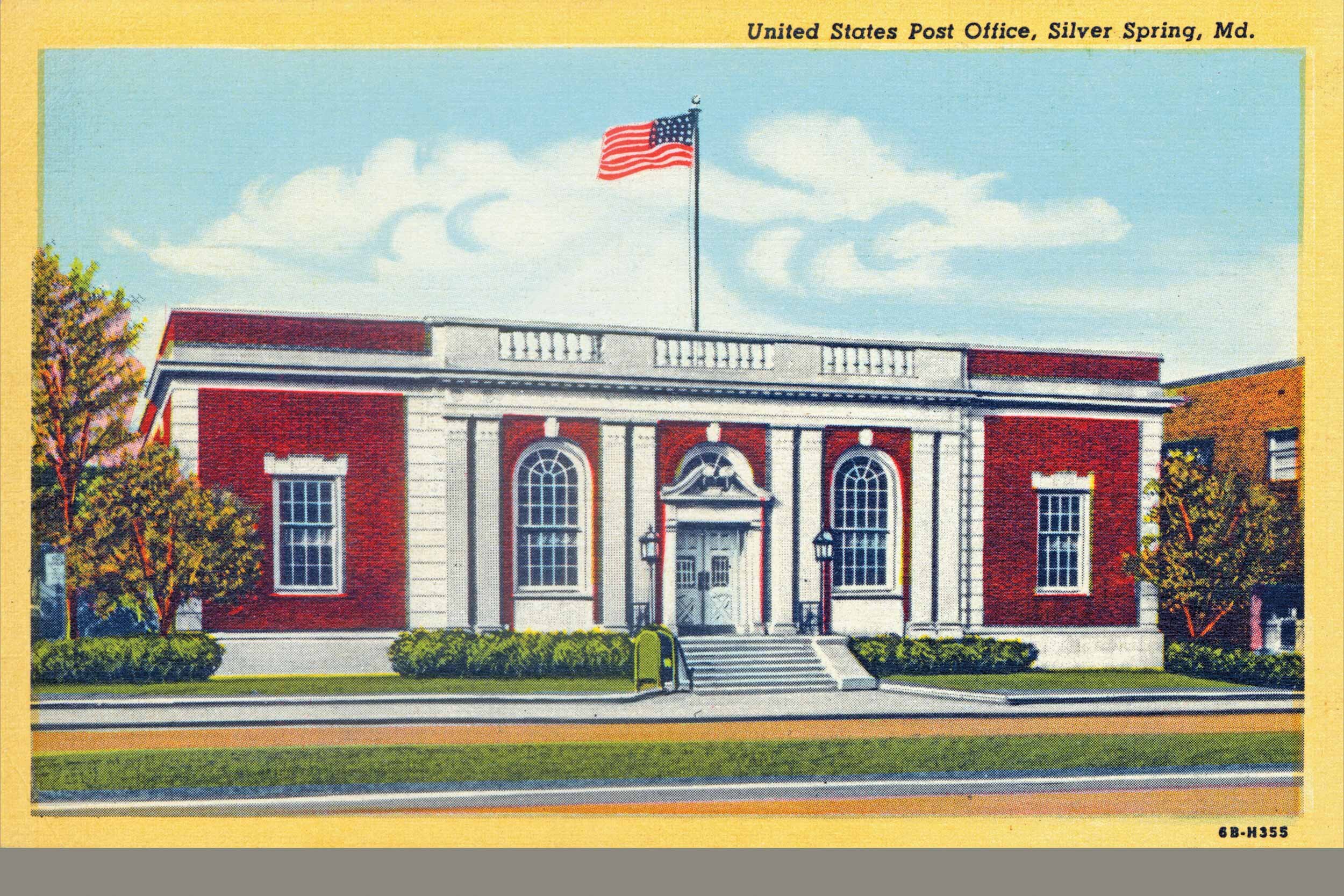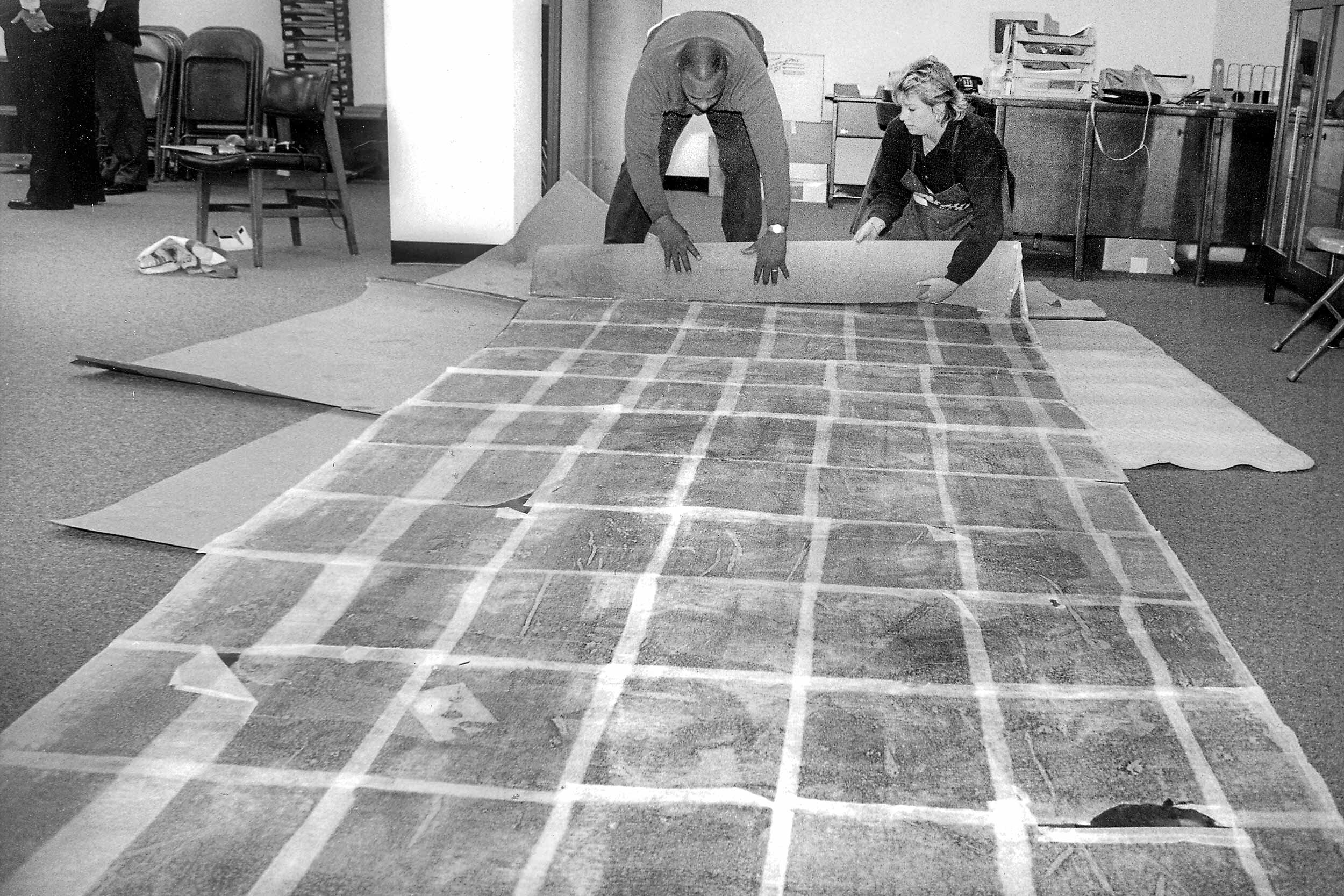Brick Is Enduring
In 1931, the Lansdale, Pa. engineer Frank H.M. Klinge published the Atlas of Montgomery County: Volume One. Real estate atlases were created to assist fire insurance companies in assessing the risk associated with insuring a specific property. (Brick buildings, shaded in red on the plat, weren’t as likely to burn, so were a lower risk.) These historic atlases, commonly known as plat maps, provide important and detailed information to researchers wishing to understand the history and evolution of a community.
The 1931 plat map depicts buildings on a portion of original “Main Street” Georgia Avenue. The majority of the buildings on Georgia Avenue between Wayne and Eastern avenues were built in the first half of the 20th century.
These one- to three-story durable brick buildings continue to be used nearly a century later. Virtually intact in 2009, these structures are enlivened by multicultural small independent businesses and institutions offering goods and services to the community, just as when originally constructed. Addition of subsequent commercial and institutional structures presents a veritable timeline of Silver Spring’s history and architectural styles from the early 1900s to the present.
The Post Office and the Civil War
If you had used our post office between 1937 and 1981 you would have seen a mural depicting a possible Civil War scenario.
Opened on March 1, 1937, the Georgian Revival style Silver Spring post office (8412 Georgia Avenue) was the first Federal building constructed in Montgomery County. Inside the lobby was a 5'8" x 15'11" oil-on-canvas mural by Nicolai Cikovsky titled The Old Tavern. This artwork was a product of the U.S. Treasury Department’s Section of Painting and Sculpture, created by President Franklin D. Roosevelt’s New Deal administration to incorporate murals and sculpture in new post office construction. The purpose of the program was to employ out-of-work artists and educate the American public about their culture and history.
The mural depicts Civil War Union soldiers who have picked up their mail at the Eagle Inn, a tavern that stood on the corner of Georgia Avenue and Colesville Road. When Cikovksy was asked about the inclusion in the mural of an African-American soldier, seen holding his rifle in one hand and a letter in the other, his reply was, “… he is intended to symbolize the result of the Civil War—namely the liberation of his race.” In fact, more than 209,000 African-Americans served in the Union Army during the Civil War.
This mural now hangs on the ground floor of the Silver Spring Library.













